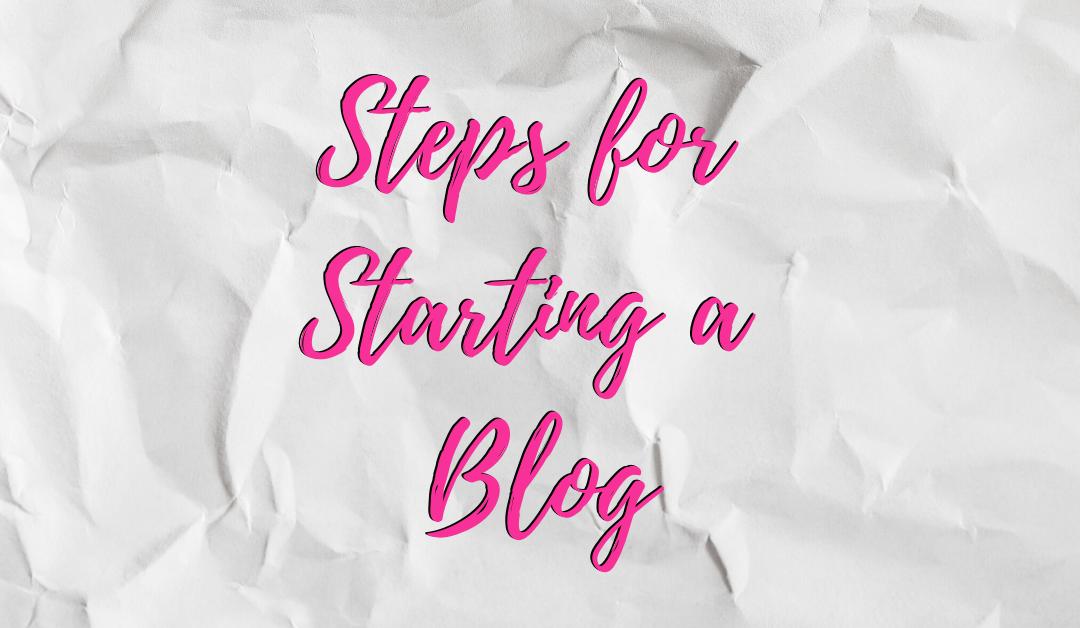So you want to start a blog? Writing will be easy, they said. Writing will be fun, they said. I’ve written a few blogs in my day, and honestly, most of the time I’m left banging my head against the table, waiting for something interesting to pop out. Good news, I have some helpful tricks to get you off and writing!
Step 1. Pick a focus.
Focus, young grasshopper. Figuring out what the blog topic will be is your first step. Is the topic interesting? Are other people going to find useful information from the blog? Are you a decent writer? If the answer to any of these questions is no, then maybe rethink the path that you’ve chosen.
If your answer is, “oh hell yea” let’s dive into what you’re passionate about. If you have a love for fitness and have gained a following on social media, then get into the lifestyle blogging game! If you are an amateur baker, cooking your way through your family’s cookbook and want to document and share the experience; write a food blog. They always say, “write what you know.” There’s a reason for this.
Narrow down your interests and create valuable content from there. You have the ideas and information in your head, just let them flow out onto the page. Pro Tip: I’ve noticed that the best content comes to me when I’m simply just living my life. When you feel inspired, jot down the topic and a few notes. Then when writin’ time comes, you’ve got ideas and concepts!
Step 2. Writing the flippin’ thing.
Throw away almost everything you learned in school, it’s time to write a blog. Writing online is much different than writing a thesis paper for your college degree (who wants to write or read another one of those anyway?). When people are searching the internet, they want to quickly scan for information and then move on.
Norton National sat down with Hannah Seldon, our expert on everything blogging, and here’s what you need to know:
- Blogs should only be 300-1,000 words, depending on the topic.
- Use hyperlinks to promote other content or outside info that is relevant to the topic.
- Use keyword-friendly language. Now is not the time to bust out the 14 letter SAT words.
- Keep paragraphs short and concise.
- Use subheadings and bullet points.
Step 3. Never too many edits.
Time to become one with a thesaurus. I can’t tell you how many times I’ve been rereading my blogs and realized that the word consumer was used six times in one paragraph. It’s like my brain doesn’t register that there are other words in the English language. This is why I became best friends with a thesaurus.
Mistakes happen, don’t stress. Having a second pair of eyes read through your work is always recommended. Using editing tools like Grammarly is extremely beneficial and can easily catch all errors without having to think twice.
Step 4. Stick to a schedule.
Consistency is key people! Posting every day isn’t necessary, but once a schedule is put in place, stick to that. Going a few months with zero posts and then randomly three blogs pop up in one day doesn’t boost your SEO (Search Engine Optimization). That’s how most bloggers disappear. When the loss of motivation and posting consistently comes to a stop, your followers will disengage.

To help stay on track, create a schedule calendar. Implement deadlines for yourself, and plan ahead for when content will be published. Knowing in advance 6-12 months to have an idea of what themes or topics can go live will help keep your audience engaged. For example, if you have 6 blogs about chocolate bars, plan to launch them all around Halloween or Valentines. Followers are more likely to ready candy blogs around this time of year.
Step 5. Bragging rights.
Time to promote the heck out of your blog. This is especially important when first starting out.
Share each new blog on all social media platforms. Ensure that your profiles are public and posts are shareable so that the blog can reach a wider audience.
Comment on other blogs so they can link to your own blog. This brings traffic on other sites, to your own.
Don’t limit yourself to only promoting online. Throw the blog URL on your business cards and email signature. People might get curious and check out what else you have to offer.
Other Helpful Tips.
- Re-share your old blog posts to boost traffic.
- Watch out for copyright on pictures. Take your own pictures or use a reliable stock image site. I’m warning you now to avoid getting, you know, sued…
- Write down all ideas. I think of blog ideas all the time; in conversion, in the shower, while snooping on other people’s blogs. Jot them down before you forget! We mentioned this twice… there’s a reason for that.
Anyone can start a blog. The hardest part is convincing yourself that you have interesting thoughts that other people want to hear. Once you do, then the words will come. Stop overthinking and start writing. Don’t stop at this blog, Norton National has plenty of helpful blogs to get you started. Keep reading here!



Very well said.
Thank you giving Very useful tips to start a blog.